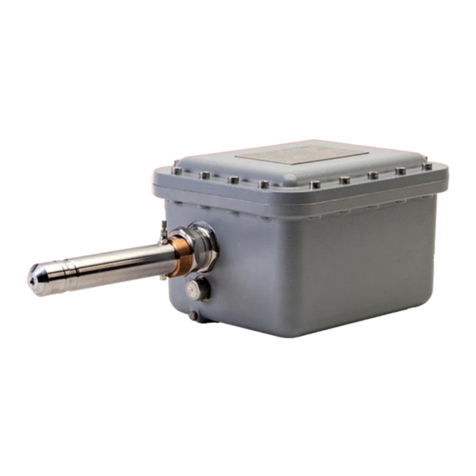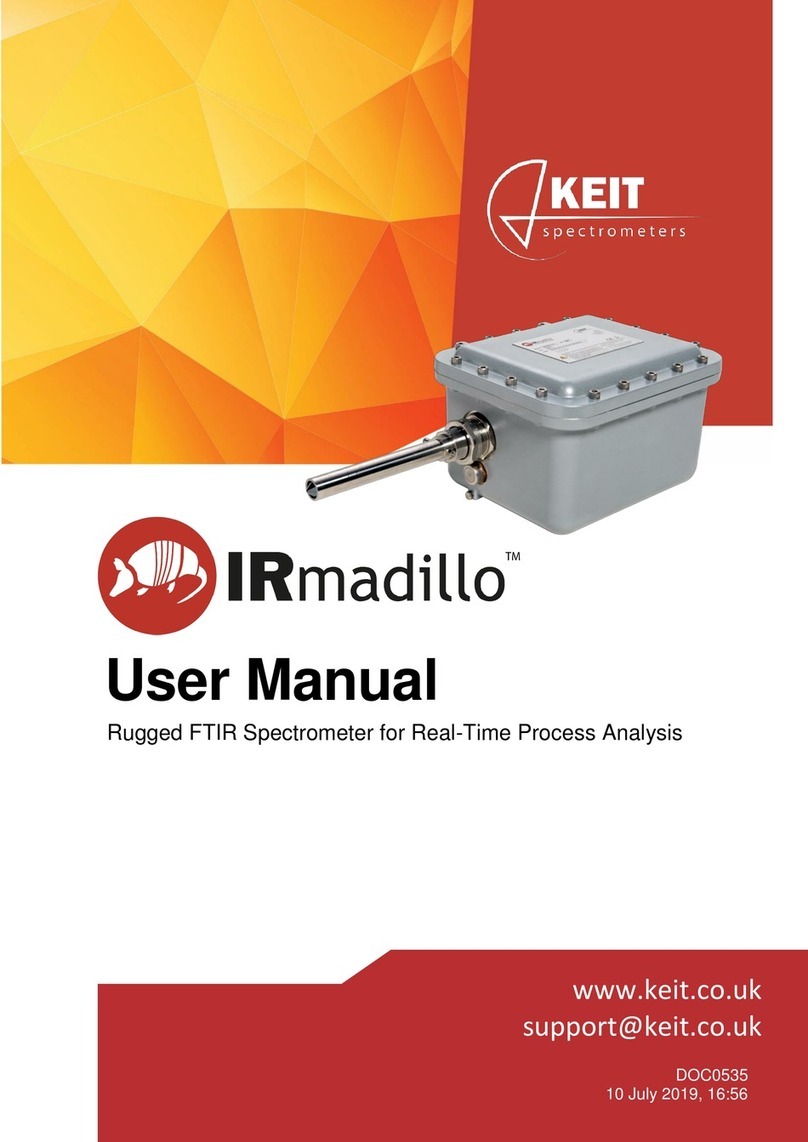
Page 1
DOC0945 (11 August 2022 10:01)
www.keit.co.uk Back to Table of Contents
Table of Contents
1. Safety ............................................................................................................................ 3
1.1. General safety ........................................................................................................ 3
1.2. Lifting instructions ................................................................................................... 3
1.3. Electrical safety ....................................................................................................... 3
1.4. Pressure and temperature limits ............................................................................. 3
1.5. Operating environment limits .................................................................................. 4
2. How to Power, Purge and Connect the IRmadillo ........................................................... 5
2.1. Powering the IRmadillo ........................................................................................... 5
2.1.1. Uninterruptible power supply (UPS) ................................................................. 5
2.1.2. Power cable ..................................................................................................... 5
2.2. Purging the IRmadillo .............................................................................................. 6
2.3. How to connect data communications ..................................................................... 7
2.3.1. Connecting the fibre data communication cable to the controller...................... 8
2.4. Checking for warnings and checking the probe is clean .......................................... 9
2.4.1. Cleaning instructions ........................................................................................ 9
2.4.2. Recognising if the probe is clean ................................................................... 10
2.5. Taking a background ............................................................................................ 11
2.6. Installation best practice........................................................................................ 11
3. Maintenance ................................................................................................................ 13
3.1. Service and support contacts ................................................................................ 13
3.2. Maintenance & support programme (MSP) ........................................................... 13
3.3. Spectrum health .................................................................................................... 13
3.3.1. Use at high temperature ................................................................................ 14
3.3.2. Emitter ageing ................................................................................................ 14
3.4. Remote health check ............................................................................................ 15
3.5. Cleaning the fibre optic data cable connectors ...................................................... 15
3.5.1. Cleaning the Souriau fibre-optic connectors ................................................... 15
4. Components ................................................................................................................ 18
4.1. IRmadillo spectrometer ......................................................................................... 18
4.2. Controller specifications ........................................................................................ 20
4.3. Storage conditions ................................................................................................ 20
5. Accessories ................................................................................................................. 21
5.1. Sample cell - ASM1398 ........................................................................................ 21
5.1.1. Maintenance .................................................................................................. 21
5.1.2. Cleaning ........................................................................................................ 21
5.2. Flow cell ................................................................................................................ 22





























